Hoosier History Live is an independently produced new media project about Indiana history, integrating podcasts, website www.HoosierHistoryLive.org, weekly enewsletter, and social media. Its original content comes initially from a live with call in weekly talk radio show hosted by author and historian Nelson Price. You can hear the show live Saturdays from noon to 1 pm ET at WICR 88.7 fm or stream the show live at the WICR HD1 app on your phone, or at our website.
May 18, 2024
An acclaimed race driver and a sportswriter: two lives cut short
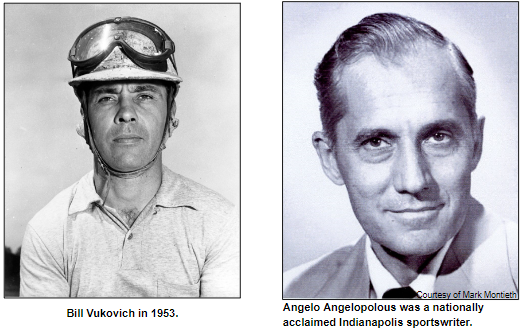
 A fan favorite even though he shunned publicity, hard-charging Bill Vukovich was the two-time defending champion at the Indianapolis 500 and on his way to a third consecutive victory in 1955 when he was killed during a horrific crash.
A fan favorite even though he shunned publicity, hard-charging Bill Vukovich was the two-time defending champion at the Indianapolis 500 and on his way to a third consecutive victory in 1955 when he was killed during a horrific crash.
One of his closest friends was a nationally acclaimed sportswriter, charismatic Angelo Angelopolous of the Indianapolis News, who chronicled Vukovich's rise from a hard-scrabble childhood (and a family tragedy) to his triumphs at the Indianapolis Motor Speedway. Angelopolous had completed an eagerly anticipated biography of his friend before the sportswriter died at age 43, probably as a result of radiation exposure he endured as a pilot in World War II by flying over atomic bomb sites in Japan.
The manuscript of the biography of Vukovich went unpublished for nearly 65 years and remained in the closet of Angelopolous' nephew. But Vukovich never has been forgotten among Indy 500 history enthusiasts. A photo of the publicity-adverse driver covering his face in his Gasoline Alley garage after escaping crowds following his triumph in 1954 remains the bestseller in the Speedway's photoshop.
Now, nearly 65 years after Angelopolous wrote the biography, another acclaimed Indianapolis sports journalist, Mark Montieth (website: markmontieth.com), has edited and published Vukovich: The Man Who Wouldn't Lift. The subtitle refers to his aggressive driving style, reflected in his tendency to "stay on the throttle longer in the turns", as Mark puts it. Mark, who has written a prologue and an epilogue featured in the "rescued" book, will be Nelson's guest to share insights about both Vukovich and Angelopolous.
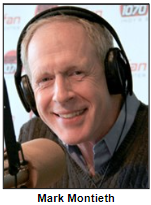 Vukovich, who was 36 when he was swept up in a five-car accident and killed, had grown up in Fresno, California. That's where, when he was 14 years old, his father committed suicide after foreclosure proceedings apparently had been initiated on his farm.
Vukovich, who was 36 when he was swept up in a five-car accident and killed, had grown up in Fresno, California. That's where, when he was 14 years old, his father committed suicide after foreclosure proceedings apparently had been initiated on his farm.
Tragedy followed the Vukovich family for generations. Bill Vukovich's grandson, known as Bill III, was killed at age 27 in a sprint car race in Bakersfield, California. Bill III had competed in the Indianapolis 500 in 1989 and 1990. His father (the son of Bill), called Bill Jr., raced 12 times in the Indy 500; he died in 2023 after suffering from dementia.
Angelo Angelopolous, the award-winning sportswriter, never got to cover the careers of Vukovich's son and grandson. An Indianapolis native and the son of a Greek immigrant, he graduated from Butler University and put his newspaper career on hold to enlist in the Navy during World War II, serving as a pilot. At the end of the war, he flew over bombing sites in Japan. The radiation exposure, according to Mark, eventually "resulted in a diagnosis of leukemia".
Mark Montieth describes Angelopolus as "handsome, humble, charismatic and married to a local model". Before his death in 1962, Angelopolus "did more than anyone to reveal Vukovich to the public", Mark writes. Although Vukovich(called "Vuky" by fans) distrusted most journalists, he befriended Angelopolous. The two spent hours together in garages at the Speedway and local restaurants.
His biography of his friend was, as Mark puts it, "unfinished business". Mark, who covered the Indiana Pacers for the Indianapolis Star, is the author of several books, including Reborn: The Pacers and the Return of Pro Basketball to Indiana (2017). He has been a Hoosier History Live guest several times, most recently on a show last September about basketball icon Larry Bird.
Your contributions help keep Hoosier History Live on the air, on the web, in your inbox, and in our ARCHIVES!

Latest Podcast Available!
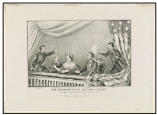
For a complete list of show podcasts and show enewsletters, please go to ARCHIVES on our website.

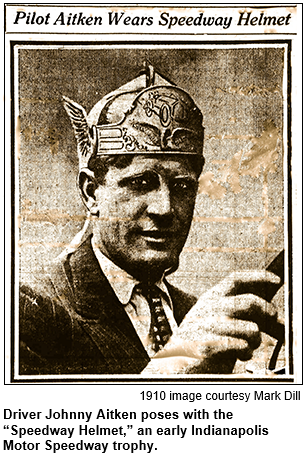 After 22-year-old native Hoosier
After 22-year-old native Hoosier 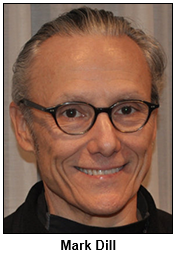 Speaking of vintage: Many Hoosiers know a bit about
Speaking of vintage: Many Hoosiers know a bit about 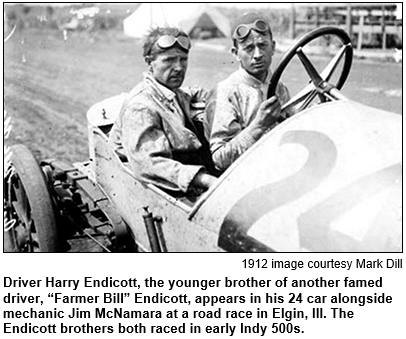 Other early Indy 500s drivers we will explore include
Other early Indy 500s drivers we will explore include 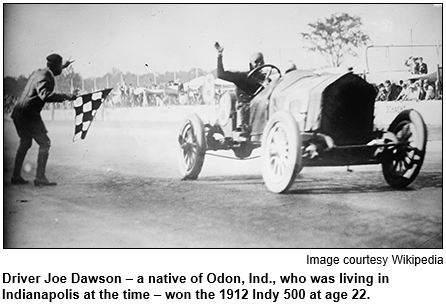 Barney Oldfield, who even starred in a Broadway musical, generally is considered to have been the first American auto racing celebrity. According to the website of the
Barney Oldfield, who even starred in a Broadway musical, generally is considered to have been the first American auto racing celebrity. According to the website of the 
